
5 Server Control Panel Open Sources to Try
Are you looking for a cost-effective way to manage your server? Server Control Panel Open Source is a customizable web hosting control panel. It lets server administrators manage their hosting environments easily.
This article will cover picking the best web host panels for your needs.
Key Takeaways
-
What are the aspects of the open-source server control panel?
-
5 case studies showing how businesses used free panels to grow their infrastructure.
-
7 features to consider when choosing a free server dashboard.
-
A comparison of the top 5 open-source server control panels will help you pick the best one.
-
5 benefits of server panels for better management of host environments.
-
9 common challenges faced with freehosts that can impact server handling.
-
5 Case Studies of Businesses Using Open Source Server Control
-
7 Key Features to Look for in an Open Source Server Control Panel
-
Comparative Analysis of Top 5 Server Control Panel Open Source Solutions
-
How to Choose the Best Open-Source Server Control Panel for Your Needs?
What is Server Control Panel Open Source?
A Server Control Panel Open Source is a web-based software tool. It is designed to simplify server handling tasks.
A server control panel open source helps host administrators manage web hosting environments. It allows them to customize the system according to their specific needs. Open panels let users access and change the code to fit their needs. These panels are cost-effective because they do not require licensing fees. They help with key tasks like:
-
Managing domain settings
-
SSL certificates
-
Backups
-
Web applications like WordPress.
With support from active communities, these solutions keep improving. These panels make host handling easier and help set up websites quickly.
5 Case Studies of Businesses Using Open Source Server Control
1. Etsy

Etsy is a global marketplace for handmade goods and vintage items. They rely on open-source web hosting control panels to manage their growing infrastructure.
| Challenge | Solution |
|---|---|
| Etsy struggled with scalability as the marketplace grew. | Etsy used open-source tools to automate and scale its infrastructure. |
| Managing server resources for thousands of vendors and consumers was difficult. | They used open-source configuration tools to optimize server resource allocation. |
Outcome: Etsy improved resource management and controlled its server environment. Their infrastructure became flexible and responsive without relying on expensive solutions.
2. Netflix

Netflix, one of the biggest streaming platforms, faces challenges with its massive infrastructure. They turned to open-source web hosting control panels to remain flexible and cost-effective.
| Challenge | Solution |
|---|---|
| Managing a global infrastructure with millions of users. | Netflix adopted open-source tools for service management. |
| Ensuring scalability and uptime during peak times. | Netflix used open-source tools for automation and scaling to support its microservices architecture. |
Outcome: Netflix improved its ability to scale, reduced downtime, and delivered a better user experience. Open-source tools allowed them to stay agile and responsive to changing needs.
3. GitLab
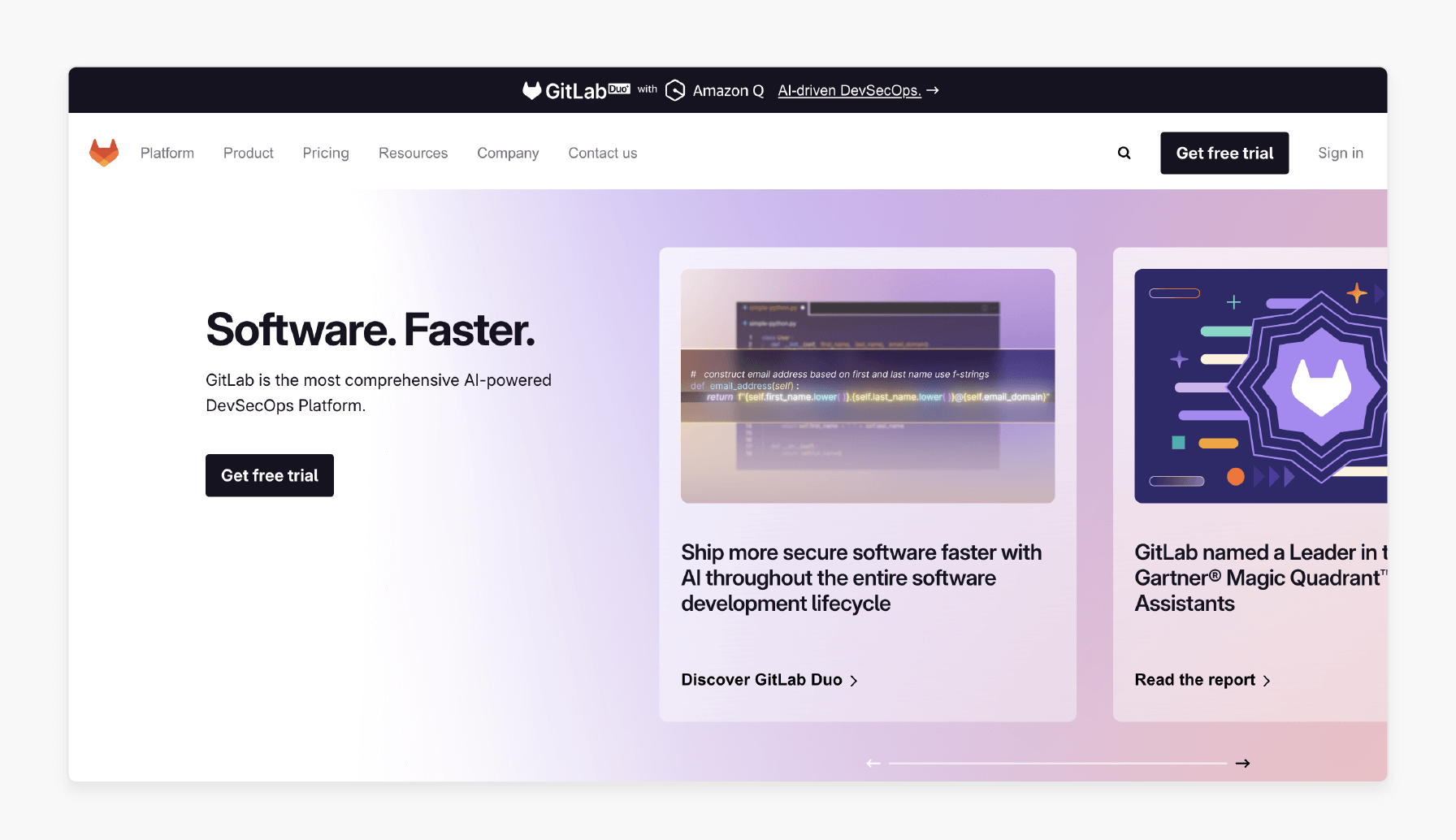
GitLab is a web-based DevOps platform. It helps to manage CI/CD pipelines. Their commitment to open-source extends to infrastructure management.
| Challenge | Solution |
|---|---|
| Managing the growing number of users and repositories. | GitLab uses open-source automation tools to manage deployments and infrastructure health. |
| Maintaining flexibility in a fast-changing environment. | They used customizable open-source control panels to have better control over server configurations. |
Outcome: GitLab scaled its infrastructure smoothly and supported thousands of users and repositories. Their open-source approach helped them innovate and ensure minimal downtime.
4. Reddit

Reddit, a popular social media platform, serves millions of users daily. As the platform grew, managing its infrastructure became harder. Reddit switched to open-source server control panels to simplify management.
| Challenge | Solution |
|---|---|
| Managing high traffic and ensuring uptime during peak periods. | Reddit used Puppet to automate server scaling and keep the platform stable. |
| Managing infrastructure for a large, distributed team. | Reddit implemented open-source tools for monitoring and collaboration to improve server management. |
Outcome: Reddit saw better server management, reduced downtime, and smoother scaling. Open-source tools helped them manage costs while serving millions of users.
5. WordPress

WordPress powers millions of websites worldwide. It uses open-source control panels to manage hosting for its users. WordPress and its hosting partners rely on tools to help with server management.
| Challenge | Solution |
|---|---|
| Managing server resources for millions of websites. | WordPress uses open-source server control panels for better resource management. |
| Ensuring high availability and uptime for users globally. | WordPress adopted open-source orchestration tools for failover, load balancing, and automatic scaling. |
Outcome: WordPress maintained high uptime and optimized server resources. Open-source control panels allowed smooth scaling across millions of websites.
7 Key Features to Look for in an Open Source Server Control Panel
1. User-Friendly Interface
A simple interface is key for easy host handling. It should have a simple dashboard that lets users access features. This includes server health, settings, and resources. A graphical interface is handy for people unfamiliar with the command line. This helps everyone manage their host more easily.
2. Multi-Server Control
Multi-server management lets users control several servers from one place. This is very helpful for businesses with many hosts. You can manage updates, monitor server status, and apply changes from a single interface. This makes it easier to scale and manage a growing business.
3. Domain Settings Management
Domain and web address management allow users to add and manage domains directly from the dashboard. You can easily set up A records, MX records, and other domain settings. This ensures your websites and services are always running and accessible to users.
4. Backup and Restore Options
Backup and restore options are essential to protect your data. The dashboard should allow you to set up automatic copies. It helps to protect the critical information. If something goes wrong, you can restore the data quickly. This can get the system running again without much downtime.
5. Security Options
Security tools like SSL integration, firewalls, and intrusion detection are essential. These are for protecting your host. SSL secures data, keeping communication safe. Firewalls block unwanted access, and intrusion detection helps spot security threats. Some free panels also work with services to provide extra protection.
6. Single-Click Application Installation
Single-click application installation simplifies setting up apps. You can install, configure, and launch the app with one click, saving time. This feature is great for web hosting providers who must set up apps quickly and efficiently.
7. Resource Monitoring
Resource monitoring helps you track server performance in real time. It shows you how much CPU, RAM, disk space, and bandwidth are used. This helps identify problems early and allows you to optimize resources. This also keeps the host running smoothly.
Comparative Analysis of Top 5 Server Control Panel Open Source Solutions
1. CyberPanel
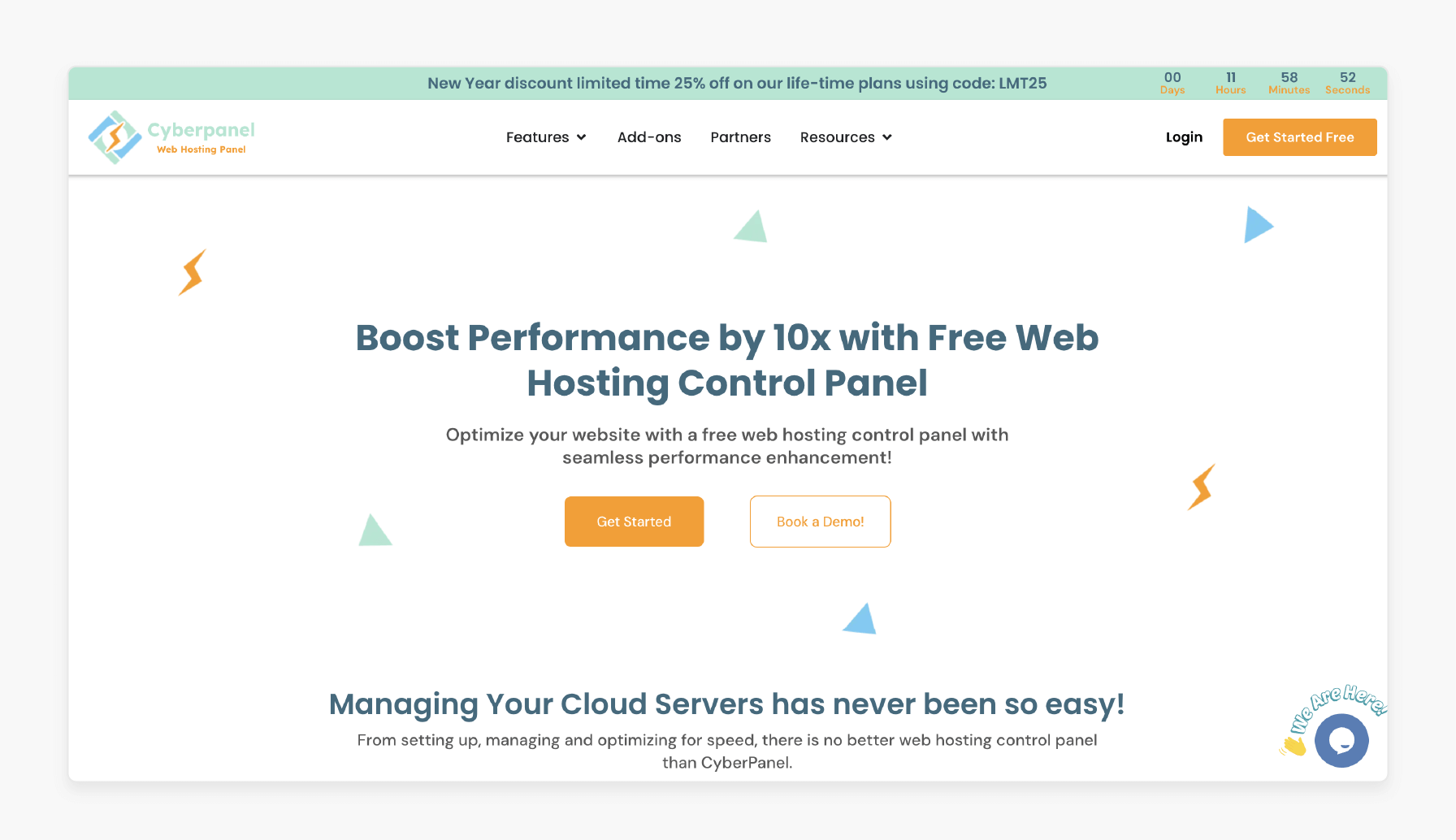
CyberPanel is built on OpenLiteSpeed, which is perfect for VPS hosting. It provides high-performance web hosting in a simple interface.
Key Features:
-
LiteSpeed support for faster web hosting.
-
CDN service integration for SSL and security.
Cons:
-
Limited software stack support (works best with LiteSpeed and Apache).
-
A premium version is needed for some features.
-
The interface is not as simple.
-
It is not ideal for complex host setups.
2. Virtualmin

Virtualmin is a free, highly customizable dashboard for Linux and BSD systems. It is ideal for those who need complete control over their servers.
Key Features:
-
Supports many system distributions like Debian and Ubuntu.
-
Multi-server control to manage several hosts from one place.
Cons:
-
The interface can be overwhelming for beginners.
-
It is not optimized for cloud hosting.
-
Requires technical knowledge to use.
-
Premium features are behind a paywall.
3. Vesta Control Panel
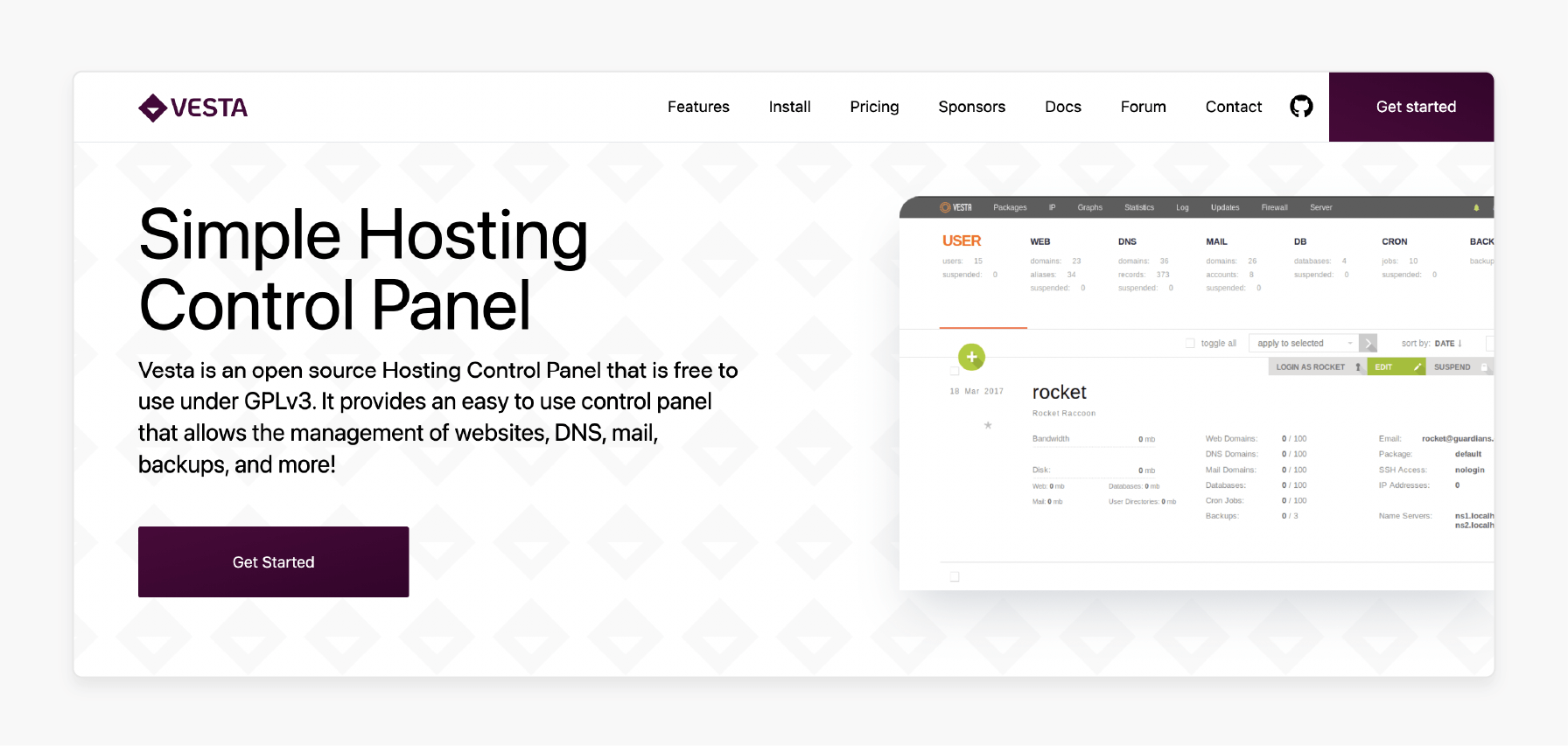
Vesta is a free, open dashboard that’s lightweight and easy to use. It is for small businesses or personal projects needing basic hosting management.
Key Features:
-
Built-in domain settings and FTP management.
-
Simple web interface for quick setup.
Cons:
-
Lacks multi-server handling.
-
Not suitable for complex infrastructures.
-
Does not support cloud hosting optimizations.
-
Lacks the extra pro features of more powerful panels.
4. Webmin
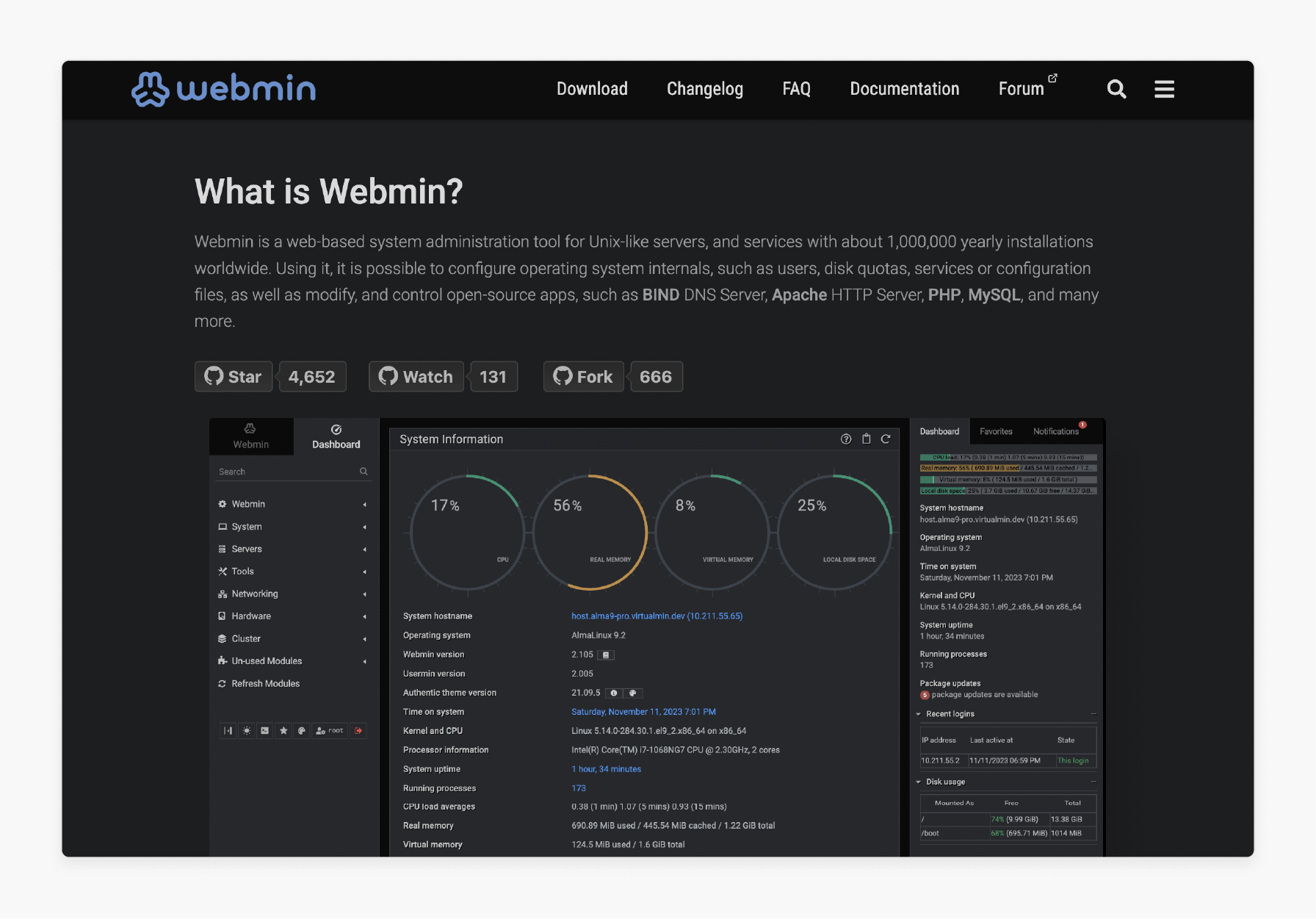
**https://webmin.com/** is a flexible, open panel for managing hosts. It is for advanced users who need complete control over their server settings.
Key Features:
-
Modular design to add only needed features.
-
Supports both system and Windows.
Cons:
-
The interface is outdated and challenging for beginners.
-
Requires technical knowledge to use.
-
Not optimized for cloud hosting.
-
Lacks cloud optimizations.
5. aaPanel
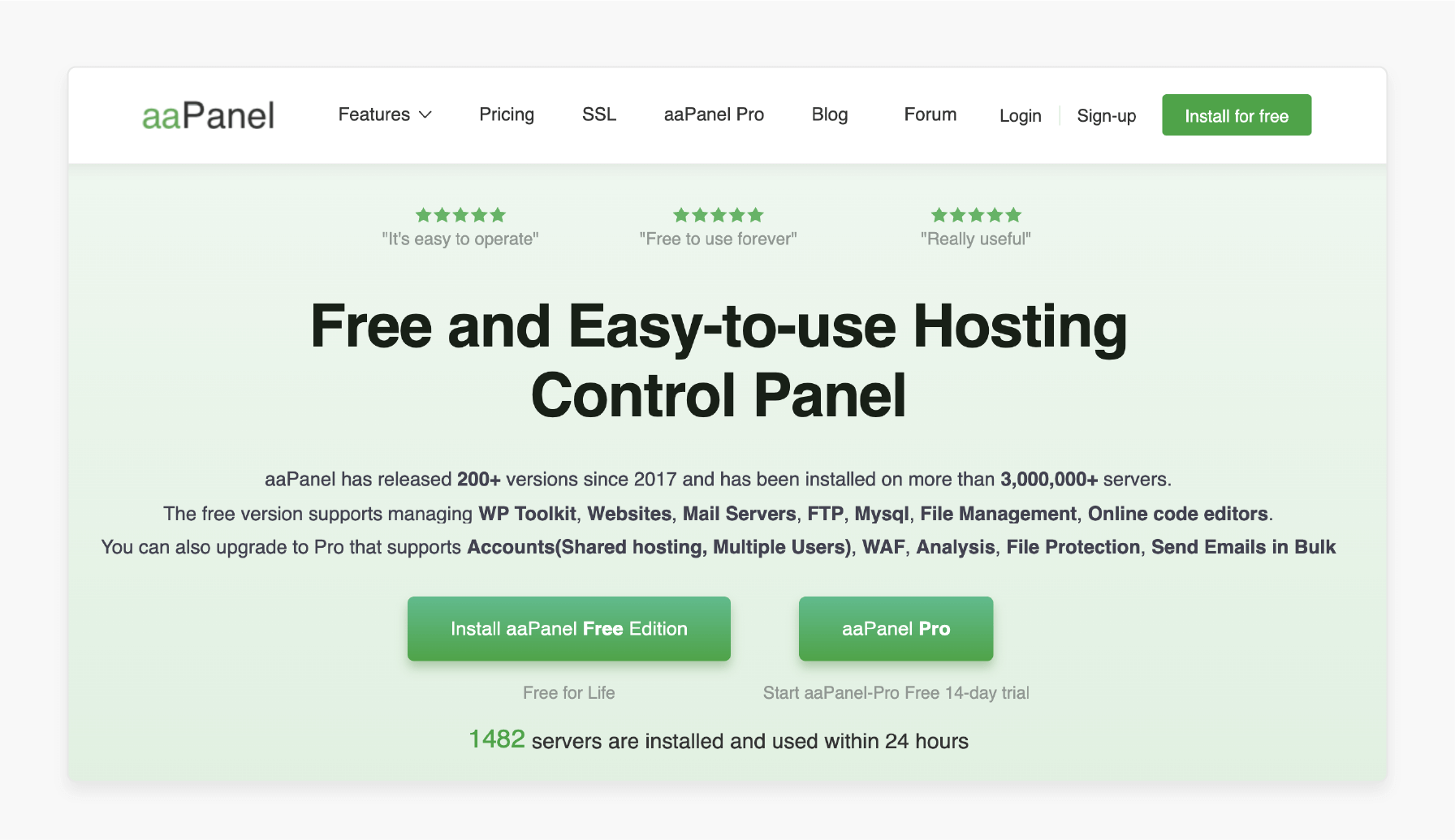
aaPanel is a simple and free dashboard for managing web hosting. It is designed for beginners who need an easy way to set up and manage their hosts.
Key Features:
-
Single-click installations for Joomla.
-
CDN service integration for better security.
Cons:
-
Lacks extra features like multi-server control.
-
Not suited for large-scale hosting.
-
Not optimized for cloud hosting.
-
Lacks the powerful features found in more complex panels.
How to Choose the Best Open-Source Server Control Panel for Your Needs?
| Factor to Consider | Details |
|---|---|
| Define Your Requirements | List the needed features, like website management, email handling, and database control. Consider any extra features you need, such as monitoring. |
| Ease of Use | A good control panel designed for Linux should have an easy server management interface. It should be clear and organized, helping you find what you need quickly. |
| Supported Operating Systems | Ensure your free web hosting control works with your host's operating system. This will ensure a smooth setup and use. |
| Customization and Flexibility | The panel should let you adjust settings and make changes as needed. Froxlor and ISPConfig offer good flexibility for customization. |
| Protection Features | Look for strong security options like two-factor authentication, SSL certificates, and firewalls. The panel should also update regularly to fix security issues. |
| Community and Support | A strong community is important for getting help and advice. CloudPanel has an active community and offers support options. It includes forums, live chat, or tickets to solve problems quickly. |
| Performance and Efficiency | Test how the panel affects server speed. A lightweight dashboard designed for efficiency will not slow down your host. |
| Cost and Licensing | CloudPanel is free and also offers a free web host panel. Check for hidden fees or costs with extra features or licenses. |
| Popular Open-Source Panels | Look into popular panels like ISPConfig and CWP. These powerful and flexible free panels make them an excellent choice for many users. |
5 Benefits of Using Open-Source Web Server Control Panels
1. Cost-Effectiveness
One of the main benefits of open panels is that they are entirely free to use. Unlike proprietary solutions with expensive licensing fees, free panels are free. They are ideal for users with limited budgets.
-
Startups and small businesses save money on licensing costs. It is helpful in the early stages.
-
Developers working on personal or client projects can enjoy full features without extra costs. For example, developers can leverage a free open-source hosting control panel for personal or client projects.
2. Customizability and Flexibility
Open-source panels allow users full access to their source code. Personalizing the software to their needs is easy. It also lets you add features or change existing ones.
-
Modify features to fit your specific host setup.
-
Add or remove functionalities depending on your hosting needs. Some hosting panels let you scale with cloud environments. This helps you expand server resources when needed. They also let users install custom modules, such as those for setting up databases.
3. Ease of Use
Free panels are designed to be easy to use, even for people with little technical experience. They simplify tasks like domain management, database control, and app launch.
-
Easily manage domains and set up domain settings.
-
Simplify email and database management.
-
Setup apps with single-click installers. Platforms like VestaCP are easy to use. They are ideal for people who want to manage a server without much effort.
4. Scalability
Open-source panels can scale from managing a small website to large, multi-host setups. This makes them perfect for businesses of any size.
-
Manage several servers from a single dashboard.
-
Quickly scale your hosting setup as your business grows. For example, you can integrate cloud services to boost your hosting capacity. This is without needing a physical upgrade.
5. Regular Updates
Open dashboards receive regular updates. It keeps them secure and up-to-date with the latest technologies. These updates fix bugs, add new features, and improve performance.
-
Frequent bug fixes and security patches keep the panel secure.
-
New features are added based on user feedback.
Common Challenges with Open Source Server Control Panels
| Challenges | Details |
|---|---|
| Limited Support | Open-source panels usually do not have official customer support. Users must depend on forums, guides, and community help. This can slow down issue resolution. |
| Lack of Enhanced Features | Free panels may not include extra features like security tools or automated backups. Users may need to add additional tools to get these features. |
| Steeper Learning Curve | Many open-source panels are more complicated to use for beginners. They require technical knowledge to set up and manage, which can be difficult for new users. |
| Inconsistent Updates | Free panels may not be updated regularly. Updates can depend on community activity, causing delays in security, bug fixes, and new features. |
| Compatibility Issues | Open-source panels may not work well with all environments, software versions, or setups. Users might need to adjust settings manually to make everything work. |
| Documentation Quality | The quality of documentation can vary greatly. Some panels have clear instructions, while others may have limited or hard-to-follow guides. |
| Security Concerns | Free software can be secure, but it may take longer to fix problems. Users must regularly apply updates and patches to keep systems safe. |
| Customization Complexity | Open-source panels can be customized, but they often require technical skills. It can be difficult and time-consuming to make these changes without expertise. |
| Performance Overheads | Some free panels can use too many system resources. This can slow down the server, especially when running many apps or hosts with limited CPU or memory. |
FAQs
1. What makes CloudPanel more appealing than paid server control panels?
CloudPanel offers powerful features and a user-friendly interface. It provides developers with flexibility and a cost-effective solution. This is without the ongoing expenses associated with traditional paid panels.
2. What are the benefits of using an open-source server control panel?
Open-source server control panels are free to use. They allow you to customize the software to fit your needs. The community updates the software regularly.
3. What makes CloudPanel a practical choice for managing multiple websites?
CloudPanel is designed to manage websites easily. Its simple interface includes tools for managing websites, databases, and emails. It is perfect for users who must manage many sites on Linux-based hosting.
4. How do open-source server control panels compare to paid options?
Open-source panels are lighter and more customizable than paid options. They may not have all the advanced features or support, but they still offer many server management tools.
5. Do open-source server control panels require technical expertise?
Most open-source server control panels may need basic technical knowledge to set them up. These offer guides and community support to help users manage their servers.
Summary
A Server Control Panel Open Source is a free tool for managing hosts. It offers a free web hosting control system for website management, email setup, and database work. These panels provide an easy hosting panel experience. Consider the following benefits to select:
-
Cost-Effectiveness: Open web host panels are free, saving you money.
-
Customizability and Flexibility: You can change and add features to meet your needs.
-
Scalability: Easily scale your hosting setup with a hosting panel. It helps to manage virtual private hosts.
Explore Cloud Panel Free Hosting to manage your server with an easy-to-use control panel.



